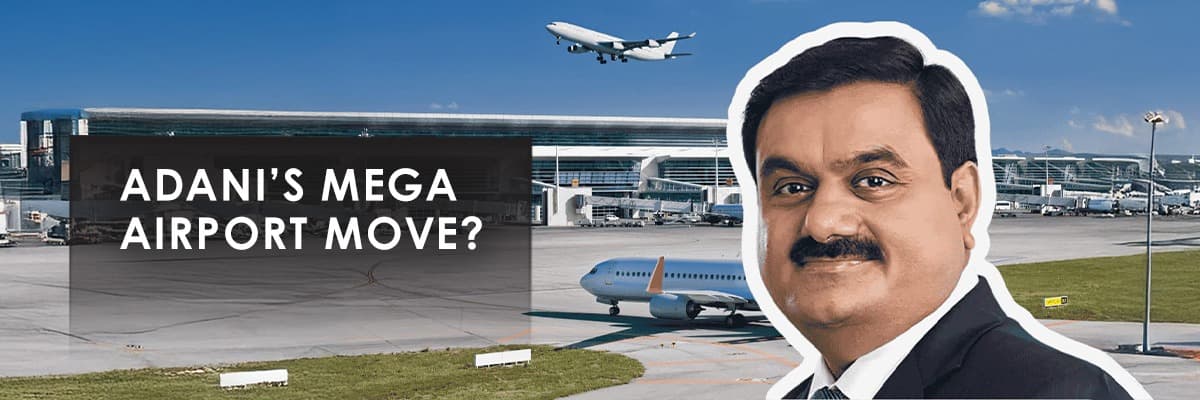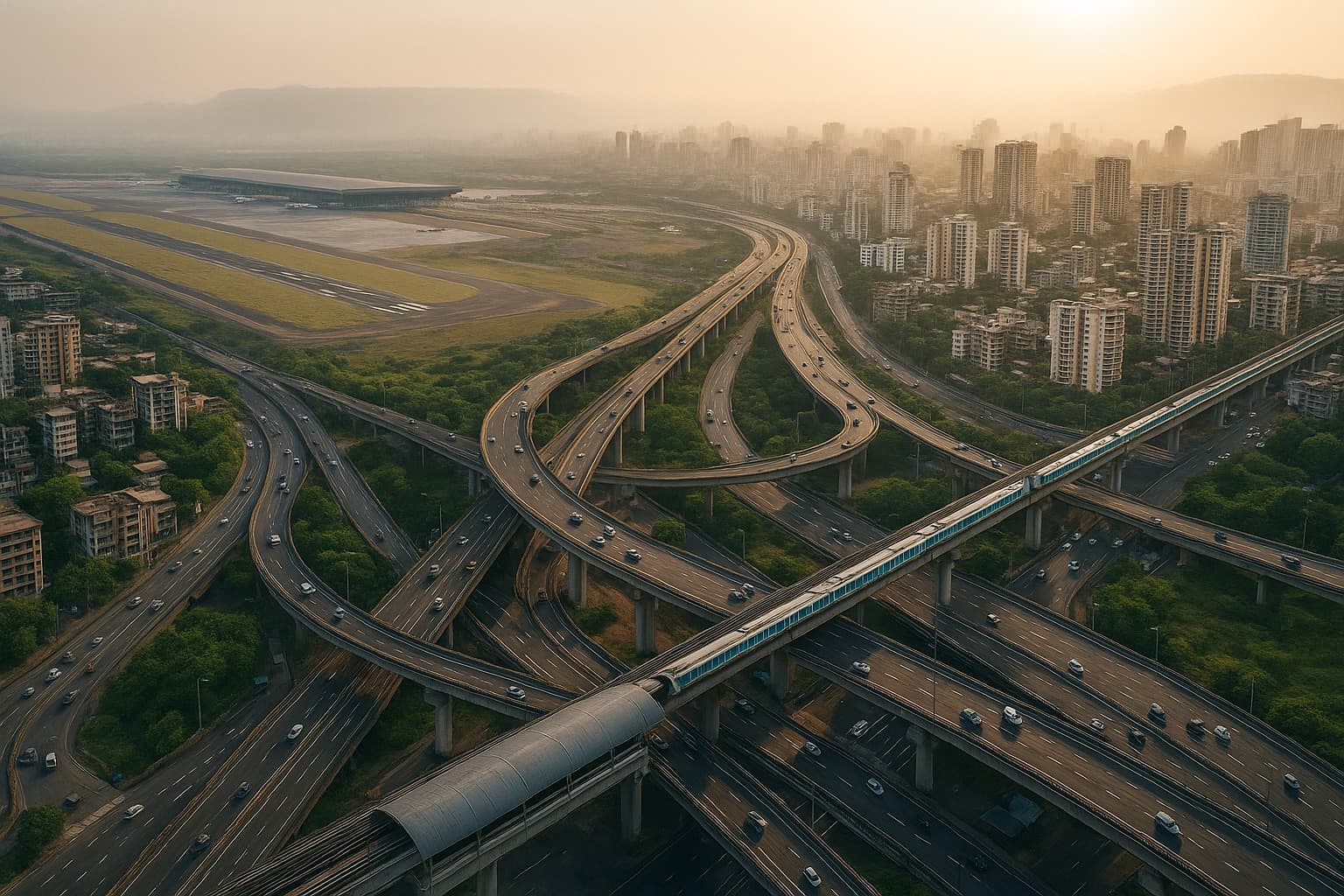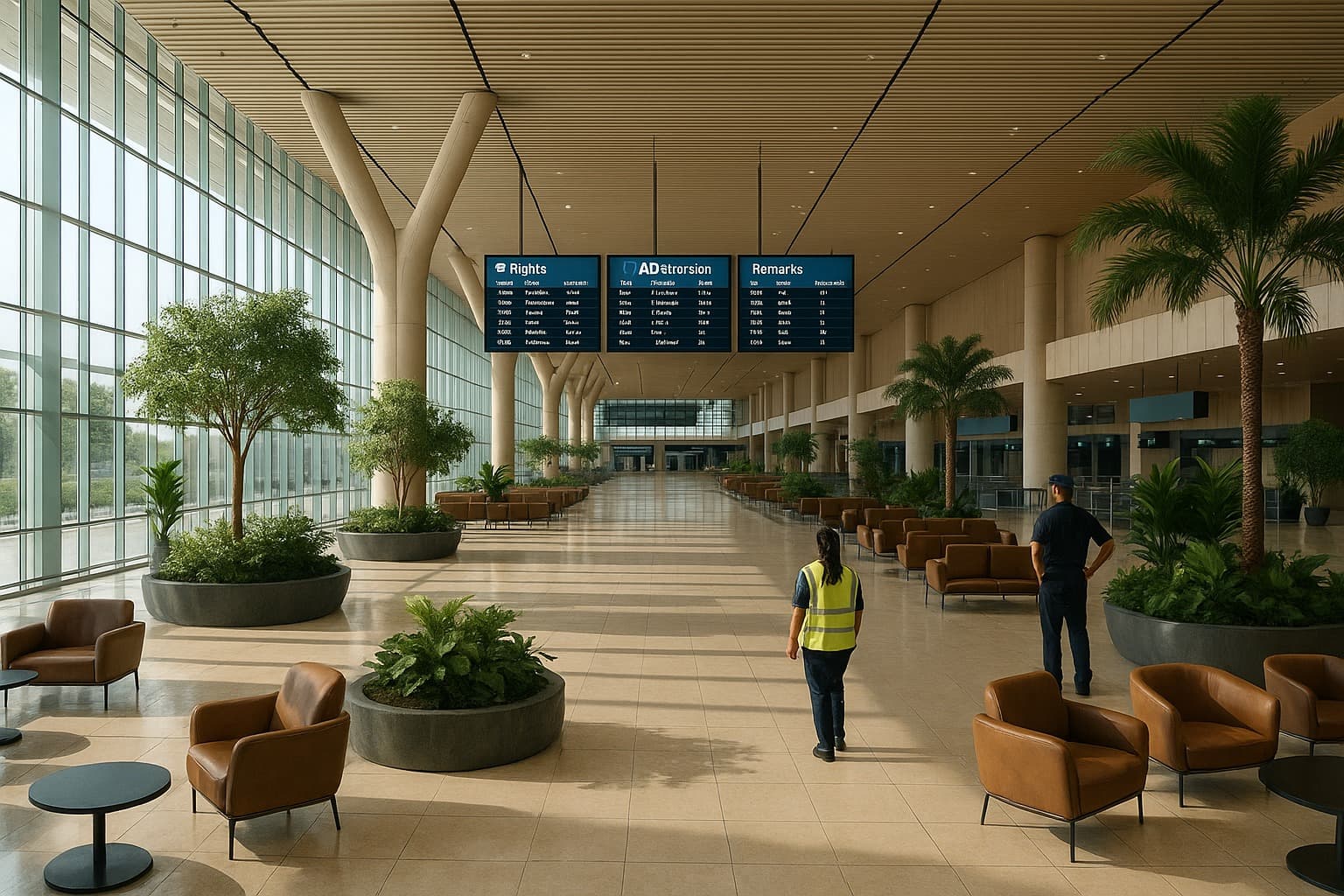Navi Mumbai Airport: A New Era for India's City of Dreams
Summary
Navi Mumbai Airport's Oct 2025 launch marks a new era for India, promising economic growth and enhanced connectivity. Adani's vision drives a sustainable, future-ready hub, transforming Navi Mumbai into a global gateway.

Navi Mumbai Airport Set to Take Off: A New Era for India’s City of Dreams
When you live in Mumbai, you get used to chaos — traffic jams that test your patience, crowded trains that test your stamina, and an unending race that defines the spirit of the city. But amidst that chaos, Navi Mumbai has always stood a little apart — calmer, better planned, and quietly ambitious. Now, that ambition is about to take flight, quite literally.
On October 8, 2025, the Navi Mumbai International Airport (NMIA) will finally be inaugurated, marking one of the most significant moments in India’s infrastructure story. After years of waiting, delays, and high hopes, the city is finally getting its second major airport — a project that promises to transform not just Navi Mumbai, but the entire Mumbai Metropolitan Region (MMR).
Gautam Adani’s Visit — The Final Countdown Begins
Just days before the big day, Gautam Adani, Chairman of the Adani Group, visited the airport site to personally review the final preparations. His visit wasn’t just a formality. It was symbolic — a nod to how personal this project has become for him and his company. Dressed simply, walking amid engineers and project heads, Adani was seen reviewing every corner with quiet focus.
The Adani Group, which is developing and managing the airport, has worked relentlessly to make this project a benchmark of modern infrastructure. The goal isn’t just to build another airport — it’s to create an aviation hub that reflects India’s growing global stature. The design, the technology, and even the sustainability measures have been planned with world-class precision.
A Dream Two Decades in the Making
If you’ve lived in Mumbai long enough, you’ve probably heard people say, “Navi Mumbai airport kab banega?” (When will Navi Mumbai airport be ready?). The project has been on paper since the early 2000s. It faced everything — land acquisition disputes, environmental hurdles, funding delays — yet the vision never faded.
Today, as runways gleam under the sun and terminals stand tall, that dream is no longer distant. For residents of Navi Mumbai, it’s a matter of pride. It’s their city’s coming-of-age story — the moment when Navi Mumbai stops being the “satellite city” and becomes a global gateway of its own.
Designed for the Future — Green, Smart, and Scalable

Unlike most airports that grow outdated within a decade, the Navi Mumbai International Airport is built for the long run. From its architectural design to its energy systems, everything is about sustainability and scalability.
The terminals are designed to let in maximum natural light, cutting down on electricity use. Solar panels, rainwater harvesting, and energy-efficient cooling systems make it one of India’s most eco-conscious airports. The first phase will handle 20 million passengers annually, eventually expanding to a capacity of 90 million.
Beyond numbers, though, it’s the little details that make it special — intuitive design, passenger-friendly layouts, and smart technology that minimizes wait times. In short, it’s an airport made for people, not just for flights.
Real Estate Buzz — The Airport Effect
Ask any real estate agent in Panvel, Ulwe, Kharghar, or Dronagiri, and you’ll hear the same thing — the airport has changed everything. Prices are climbing, demand is booming, and builders can’t stop smiling.
What once were quiet neighborhoods with modest housing projects are now hot investment zones. With improved roads, upcoming metro links, and the Mumbai Trans Harbour Link (MTHL) nearing completion, Navi Mumbai’s connectivity is transforming overnight. The airport has become the heart of this growth story — the magnetic force pulling investors, developers, and homebuyers alike.
For many, this is the perfect time to invest — before prices soar further post-inauguration. Luxury developers are already launching premium projects marketed as “Airport View Residences” or “15 Minutes from NMIA.”
Economic Ripple — Jobs, Growth, and Global Links
The impact of NMIA goes far beyond aviation. According to early estimates, the airport will create over 150,000 direct and indirect jobs in sectors like logistics, retail, hospitality, and services. Hotels are coming up near the site, logistics parks are being planned, and corporate offices are eyeing the nearby BKC-II commercial belt.
For the first time, Navi Mumbai isn’t just a residential suburb — it’s an emerging economic hub. The airport will be connected by major infrastructure corridors, including the Navi Mumbai Metro, MTHL, and Mumbai-Pune Expressway, ensuring seamless movement across the region.
This is exactly the kind of ripple effect that modern infrastructure is meant to create — when one project triggers an entire ecosystem of growth.
Adani’s Vision: Building More Than an Airport
When Gautam Adani visited the site this week, those who were present said there was a certain calm in the way he observed the terminal — almost like a craftsman inspecting his masterpiece. For him, the Navi Mumbai International Airport isn’t just a project; it’s a vision.

He has always spoken about building infrastructure that reshapes India’s future, and NMIA stands as proof. It’s not only about convenience — it’s about confidence. A message to the world that India is ready to lead in quality, scale, and innovation.
Under his leadership, the Adani Group has managed to bring together sustainability, technology, and efficiency in ways that few infrastructure projects have before.
A New Identity for Navi Mumbai
For decades, Navi Mumbai lived in the shadow of its larger sibling — a place people moved to for peace but commuted from for work. But things are changing fast. With the airport, metro, and expressways, Navi Mumbai is transforming into a city that’s no longer defined by its proximity to Mumbai — but by its own promise.
You can already feel the change. Cafés are busier, local businesses are growing, and young professionals are moving in. The city’s skyline is rising taller, and so are its aspirations. The inauguration of NMIA will not just open new runways — it will open new possibilities.
The Big Picture — India’s Infrastructure Revolution
The story of Navi Mumbai Airport is, in many ways, the story of modern India — a country no longer satisfied with “good enough.” We’re seeing airports that rival Singapore and Dubai, metros in every major city, and expressways that make distances seem shorter than ever.
The inauguration on October 8 will be more than a ribbon-cutting ceremony. It will be a celebration of vision, resilience, and belief — the belief that India can build world-class infrastructure that serves both people and progress.
As the first flight takes off, it won’t just be carrying passengers. It will be carrying the hopes of a city — and the pride of a nation.
Summary (100 Words)
The Navi Mumbai International Airport, scheduled for inauguration on October 8, 2025, marks a defining moment for India’s infrastructure journey. Ahead of the opening, Gautam Adani visited the site, symbolizing the Adani Group’s commitment to creating a sustainable, future-ready airport. Designed for 20 million passengers in its first phase, NMIA is expected to boost jobs, connectivity, and real estate growth across Panvel, Ulwe, and Kharghar. Beyond aviation, it represents India’s growing infrastructure confidence — transforming Navi Mumbai into a thriving, self-sustained global city. The new airport isn’t just a terminal; it’s the takeoff point for Navi Mumbai’s next big leap.
Video will be embedded from: https://youtu.be/SyJ4Lt2fwzg
